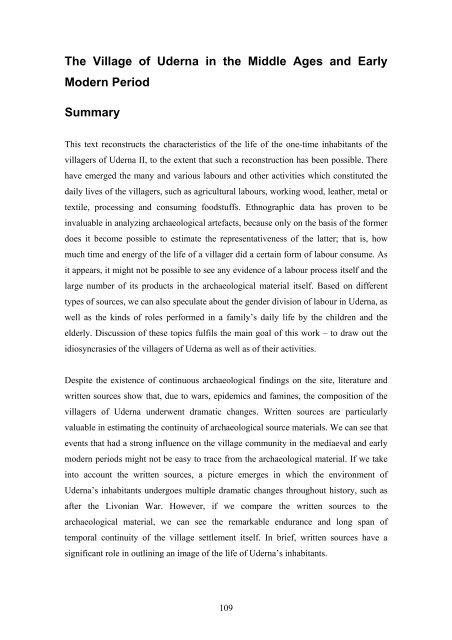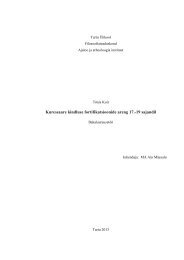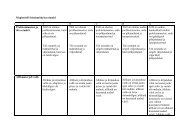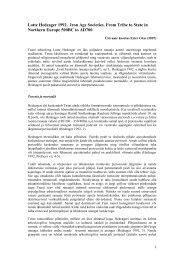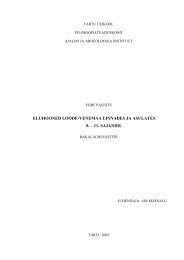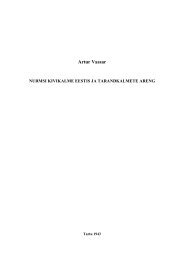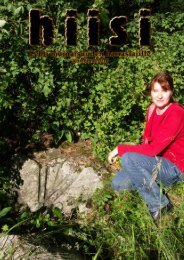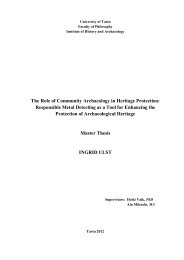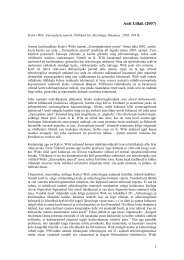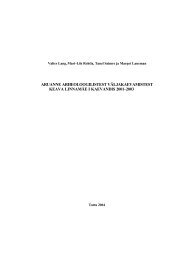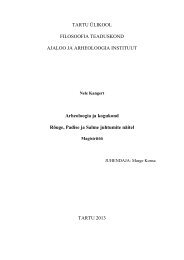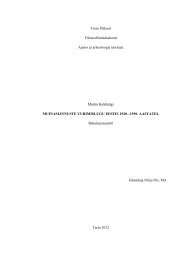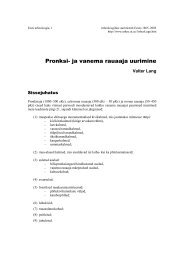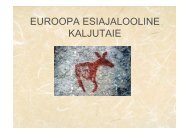PDF file (4 MB) - Arheoloogia Tartu Ãlikoolis
PDF file (4 MB) - Arheoloogia Tartu Ãlikoolis
PDF file (4 MB) - Arheoloogia Tartu Ãlikoolis
You also want an ePaper? Increase the reach of your titles
YUMPU automatically turns print PDFs into web optimized ePapers that Google loves.
The Village of Uderna in the Middle Ages and Early<br />
Modern Period<br />
Summary<br />
This text reconstructs the characteristics of the life of the one-time inhabitants of the<br />
villagers of Uderna II, to the extent that such a reconstruction has been possible. There<br />
have emerged the many and various labours and other activities which constituted the<br />
daily lives of the villagers, such as agricultural labours, working wood, leather, metal or<br />
textile, processing and consuming foodstuffs. Ethnographic data has proven to be<br />
invaluable in analyzing archaeological artefacts, because only on the basis of the former<br />
does it become possible to estimate the representativeness of the latter; that is, how<br />
much time and energy of the life of a villager did a certain form of labour consume. As<br />
it appears, it might not be possible to see any evidence of a labour process itself and the<br />
large number of its products in the archaeological material itself. Based on different<br />
types of sources, we can also speculate about the gender division of labour in Uderna, as<br />
well as the kinds of roles performed in a family’s daily life by the children and the<br />
elderly. Discussion of these topics fulfils the main goal of this work – to draw out the<br />
idiosyncrasies of the villagers of Uderna as well as of their activities.<br />
Despite the existence of continuous archaeological findings on the site, literature and<br />
written sources show that, due to wars, epidemics and famines, the composition of the<br />
villagers of Uderna underwent dramatic changes. Written sources are particularly<br />
valuable in estimating the continuity of archaeological source materials. We can see that<br />
events that had a strong influence on the village community in the mediaeval and early<br />
modern periods might not be easy to trace from the archaeological material. If we take<br />
into account the written sources, a picture emerges in which the environment of<br />
Uderna’s inhabitants undergoes multiple dramatic changes throughout history, such as<br />
after the Livonian War. However, if we compare the written sources to the<br />
archaeological material, we can see the remarkable endurance and long span of<br />
temporal continuity of the village settlement itself. In brief, written sources have a<br />
significant role in outlining an image of the life of Uderna’s inhabitants.<br />
109


